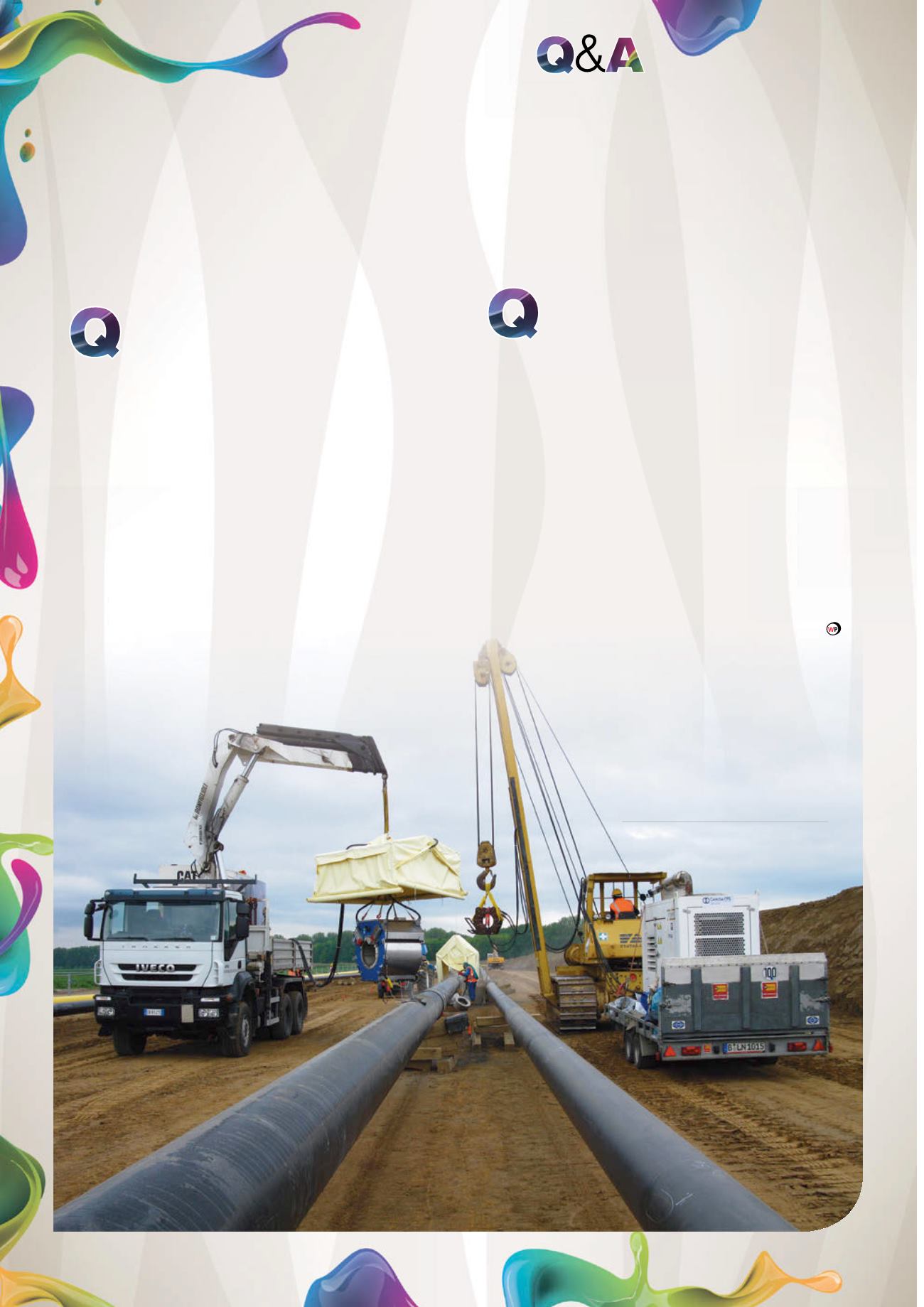
COATINGS
Figure 4.
Automated onshore
‘Factory Grade’ field joint coating
using IntelliCOAT
™
.
In Europe, EN and DNV standards are widely used in the
past while NACE standards are used in the USA. In recent
years, ISO series of pipeline coating standards were developed
and are being adopted by various countries in the world.
In general, standards set the fundamental requirements
and are augmented by company specifications that are more
projects specific.
Dr. Dennis Wong, Technology
Group Manager, Corporate R&D, Shawcor Ltd
How important is surface
preparation?
Surface preparation is the most critical step in the
coating application process. A clean surface that is essentially
free of soluble contaminants, coupled with a proper anchor
profile, is factors in achieving good and stable interface
adhesion.
Surface preparation generally consists of the following
steps: pre-wash/pre-heat, abrading and optional chemical
treatment. Different grades of steel have different hardness
that requires selection of the correct abrasive for the blasting
step. High strength steels such as X80 or X120 may require
steel grits with higher hardness. The size and size distribution
of the abrasive depend on factors such as the impact velocity
generated by the equipment. With a mechanical blaster, wheel
size, rpm, horse-power, etc. governs the selection of the
abrasive and the achievable surface cleanliness, anchor profile
and peak count density.
Mechanical cleaning is only part of the surface preparation
process. Depending on the condition of the pipe surface prior
to blasting, additional steps such as phosphoric acid wash may
be needed to remove soluble salt contaminants. Conversion
coatings may also be used to improve the interfacial adhesion
of some coating materials.
To ensure long-term performance, surface preparation is
of paramount importance.
Dennis Wong, Technology Group
Manager, Corporate R&D, Shawcor Ltd
Why do companies carry out
coating adhesion tests?
The long-term stability of the coating to substrate
interface determines the anti-corrosion performance of the
system. This interface property is often measured by variations
of the adhesion test. Simple adhesion tests such as the peel
test for 3LPE or the X-cut test for thin film FBE are used to
ensure the quality of the coating application. Short-term
stability tests, such as the hot water immersion and cathodidic
disbondment, are used to provide information on the stability
of the interface adhesion under service conditions. Another
test related to adhesion that is often neglected is the shear
test which measures the cohesive strength of the coating and
the interface adhesion.
Long-term adhesion tests, such as hot water Immersion,
heat ageing and cathodic disbondment, are used to determine
the stability of adhesion for coating qualification.
Dennis Wong, Technology Group Manager,
Corporate R&D, Shawcor Ltd
62
SEPTEMBER
2014


